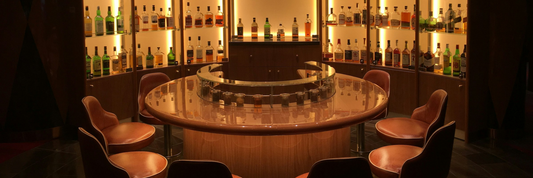In today’s health-conscious and eco-aware world, selecting the right cutting board goes far beyond aesthetics or durability it’s about protecting your family’s health and minimizing exposure to harmful chemicals. While cutting boards may seem like a basic kitchen essential, not all are created equal. Some materials can leach toxins into your food or harbor dangerous bacteria over time.
That’s why choosing a non-toxic cutting board is a smart and necessary step for anyone who values clean eating and safe food preparation. In this ultimate guide, we’ll break down the safest materials, key features to look for, and expert tips to help you confidently choose a cutting board that’s as safe as it is sustainable.
-
Pros and Cons of Using a Composite Cutting Board
-
Cutting Board Oils: Top Picks and Oils to Avoid
-
How to Oil a Cutting Board: Step-by-Step Guide for Long-Lasting Durability
Why Should You Choose a Non-Toxic Cutting Board?

Using a non-toxic cutting board is essential for both your health and the environment. Traditional plastic cutting boards can leach harmful microplastics and chemicals into your food, especially when they are heated or scratched. These substances not only pose risks to your health but can also accumulate in the food chain, affecting larger ecosystems.
-
Microplastics and Chemicals: Studies have shown that microplastics can enter our bodies through food, potentially leading to a variety of health issues, including hormonal imbalances and increased cancer risk. Chemicals found in plastic, such as BPA and phthalates, are known endocrine disruptors that can have long-term health implications.
Transitioning to natural materials, like wood or bamboo, can help mitigate these risks.
- Benefits of Natural Materials: Natural wood cutting boards do not release harmful chemicals and are often more durable than their plastic counterparts. They offer an organic solution that can improve your cooking experience. The natural grain of the wood can also add a rustic beauty to your kitchen.
- Environmental Impact: By choosing non-toxic options, you contribute to reducing plastic waste that pollutes our oceans and landfills. Natural materials are often biodegradable, making them a more sustainable choice for those concerned about their ecological footprint. Opting for materials that come from responsibly managed sources can further enhance this positive impact.
Best Non-Toxic Cutting Board Materials

Solid Wood Cutting Boards
Pros: Solid wood boards are generally made without glue and chemicals, making them a chemical-free option. They are durable and can last for years if properly cared for.
Common Wood Types: Some popular woods include:
- Hinoki: Known for its antibacterial properties and pleasant aromatic qualities.
- Sapele: A durable hardwood with a beautiful deep color that can add elegance to your kitchen.
- Maple: Commonly used in cutting boards, it is durable and has a fine grain that resists cuts.
- Walnut: Offers a rich aesthetic and is also sturdy, though not as hard as other woods.
Care Tips: To maintain your wood cutting board, use food-grade mineral oil to keep it moisturized and prevent cracking. Clean it with warm, soapy water and dry it immediately to prolong its life.
Bamboo Cutting Boards
- Pros: Bamboo is lightweight, making it easy to handle, and naturally antimicrobial, which helps in reducing bacteria in the kitchen. It is also a highly renewable resource.
- Caution: When selecting bamboo boards, ensure they are made without formaldehyde-based adhesives, as these can release harmful fumes and diminish the board’s non-toxic qualities.
Stainless Steel Cutting Boards
- Pros: Stainless steel boards are exceptionally durable, waterproof, and easy to sanitize, making them a great choice for hygiene-focused kitchens.
- Caution: However, they can dull knives more quickly than wooden boards, which may be a consideration for those who prioritize their knife maintenance.
Tempered Glass Cutting Boards
- Pros: Glass boards are non-porous, stain-resistant, and typically easy to clean, making them a popular choice in many kitchens.
- Cons: Nevertheless, these boards may damage knives over time and carry a risk of breaking if dropped, which can be a safety concern.
Composite Boards (e.g., Epicurean)
- Pros: Composite boards combine natural materials and are often dishwasher-safe, lightweight, and very durable, which makes them incredibly convenient for everyday use.
- Caution: Some composite boards may contain trace amounts of formaldehyde, so they might not be ideal for individuals with sensitivities to this compound.
Types of Cutting Boards to Avoid

Plastic Boards
Plastic cutting boards, while common in many kitchens, have significant downsides. One major concern is microplastic shedding. Over time, plastic boards can develop grooves and scratches, making them hard to sanitize completely. These tiny plastic particles can end up in our food, leading to health issues. Additionally, many plastic cutting boards are made from materials that may contain harmful chemicals.
Plywood/Composite Wood
Plywood and composite wood cutting boards often utilize adhesives that contain formaldehyde, a known carcinogen. While these boards can be visually appealing and sturdy, the potential release of harmful substances poses a risk to health. It’s best to avoid these materials if you want to ensure a safer cooking environment.
Rubber or Silicone Boards
While rubber or silicone cutting boards are marketed as flexible and easy to clean, they may harbor unidentified chemical additives. These additives can leach into food, raising concerns about potential exposure to toxins. It’s crucial to choose options that are explicitly labeled as safe for food contact.
How to Care for and Clean Non-Toxic Cutting Boards

Maintaining your non-toxic cutting board is essential for longevity and hygiene.
- Wash After Each Use: Rinse your cutting board with warm water and mild soap after each use to remove food particles and bacteria.
- Apply Food-Safe Mineral Oil: For wooden boards, applying food-safe mineral oil periodically helps to keep the wood hydrated and prevent cracking. This not only protects the surface but also enhances the board's lifespan.
- Avoid Soaking or Dishwashing: Unless specified safe by the manufacturer, avoid soaking your wooden boards or putting them in the dishwasher. Excessive moisture and high heat can warp or crack the wood.
Non-Toxic Cutting Board vs Regular Cutting Board
Material Safety
Non-toxic cutting boards are crafted from natural or food-safe materials, ensuring they are free from harmful substances like BPA, phthalates, and formaldehyde. In contrast, regular cutting boards are often constructed from synthetic resins, glues, or plastics that can pose health risks.
Longevity & Hygiene
Non-toxic wood and bamboo boards possess natural antimicrobial properties, resisting bacteria growth. On the other hand, plastic boards degrade over time, forming grooves that can trap bacteria and make cleaning difficult.
Environmental Impact
Choosing non-toxic cutting boards also promotes sustainability. Many of these boards are biodegradable or recyclable, reducing their environmental footprint. Regular plastic boards, however, contribute to microplastic pollution, which affects ecosystems and human health.
Certifications to Look for in a Safe Cutting Board

FDA Approval
Look for cutting boards that have FDA approval, ensuring that the materials used are safe for direct food contact.
FSC-Certified Wood
FSC certification indicates that the wood is sourced from responsibly managed forests, promoting sustainable forestry.
BPA-Free & Formaldehyde-Free Labels
Especially crucial for bamboo or composite boards, these labels confirm that the products don’t contain harmful chemicals.
Third-Party Tested Products
Some reputable brands provide lab reports confirming that their products are free from toxins and heavy metals.
FAQs About Non-Toxic Cutting Boards
Are bamboo cutting boards really safe?
Yes, bamboo cutting boards can be safe, provided they are made without toxic adhesives. Look for claims indicating they are formaldehyde-free for peace of mind.
Can I put a wooden board in the dishwasher?
No, placing wooden boards in the dishwasher may warp or crack the material. Hand-washing with soapy water is the best practice.
Do non-toxic boards kill bacteria?
Non-toxic boards do not kill bacteria, but the natural materials like wood and bamboo are inherently antimicrobial, helping reduce bacterial growth.
How often should I replace my cutting board?
You should replace your cutting board when deep cuts form or when warping occurs. High-quality non-toxic boards tend to last longer than their regular counterparts.
Conclusion
Investing in a non-toxic cutting board is an important step in protecting your health, that of your family, and the environment. Every choice we make in the kitchen can significantly impact our long-term well-being. By opting for safe, durable, and sustainable options, your food and your body will thank you!




